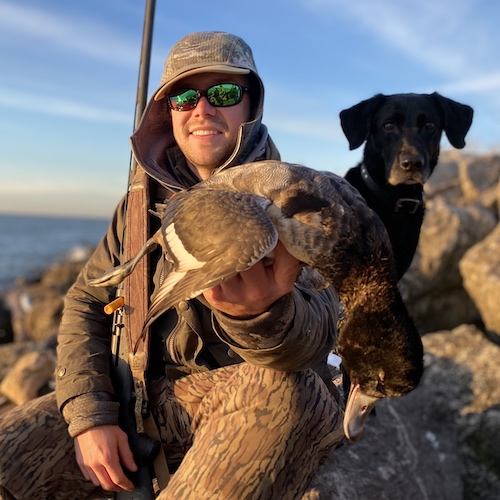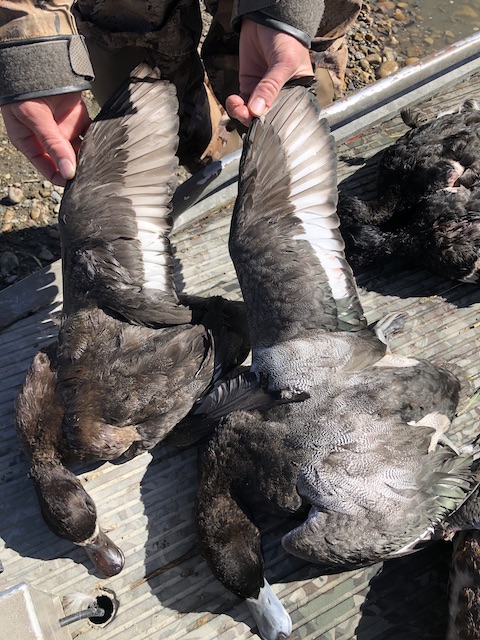Greater Scaup

Greater Scaup (Aythya marina) is the slightly larger relative of lesser scaup. Primarily a marine species, they’re colloquially referred to as Broadbills in North America. Blue-bills refer to either scaup species, collectively. Two races of greater scaup have been recognized in the northern hemisphere, with the nominate race distributed throughout Old World and said to be slightly larger. Greater scaup have a rounder head and wider blue bill than lesser scaup. Both sexes have powder blue bills tipped with black, though the hen displays a more muted tone. The drake has a black head which shows green iridescence in the right lighting and bright yellow irises. While the neck, chest, and rump are all black, they are separated by a vermiculated gray back and white plumage on either side. The hen’s plumage is mostly bight brown, except the white underbelly, white plumage surrounding the bill, and dark tail feathers. This species is not exceptionally vocal, however during courtship, drakes will rapidly but quietly hoot.
Available Hunts
 There are a few ways to distinguish lesser scaup from the relatively less abundant greater scaup. In lesser scaup, the white band is limited to the secondaries, but this white band extends into the primaries on greater scaup. The black head has a green sheen in greater scaup but a purple sheen in lesser scaup. Their bills are sturdier, wider, giving rise to the colloquial nickname “broadbills.”
There are a few ways to distinguish lesser scaup from the relatively less abundant greater scaup. In lesser scaup, the white band is limited to the secondaries, but this white band extends into the primaries on greater scaup. The black head has a green sheen in greater scaup but a purple sheen in lesser scaup. Their bills are sturdier, wider, giving rise to the colloquial nickname “broadbills.”

Broadbills have extremely limited breeding and non-breeding ranges and are the only circumpolar diving ducks. Breeding areas for this medium-sized species include the arctic tundra and taiga, with large concentrations in Alaska on the coast of the Bering Sea and Kotzebue Sound. Greater scaup are generally monogamous throughout the breeding season, however, are likely to choose a different mate ever year. Greater scaup can be seen socializing with other diving species, especially during the non-breeding season. This species winters primarily along almost any coast or Great Lake of North America in shallow bays and estuarine areas that are treeless. Great scaup mostly winter in the Atlantic Flyway, but are also bagged along the west coast, too.
Greater scaup have been described as primarily marine-oriented, but will utilize larger freshwater bodies, too. Greater scaup will dive over 20 feet underwater, searching for aquatic invertebrates such as mollusks, insects, and seeds of submerged plants in muddy substrate. Despite being strong divers, they prefer to forage in waters around seven feet deep or less.
Scaup are an important species to the US hunting tradition, especially in northern portions of the US. Despite their continental population greatly exceeding redhead and canvasback, scaup limits were only one daily throughout much of the continental US in 2020. For more information, listen to the Duck Season Somewhere episode But What About Bluebills?



















